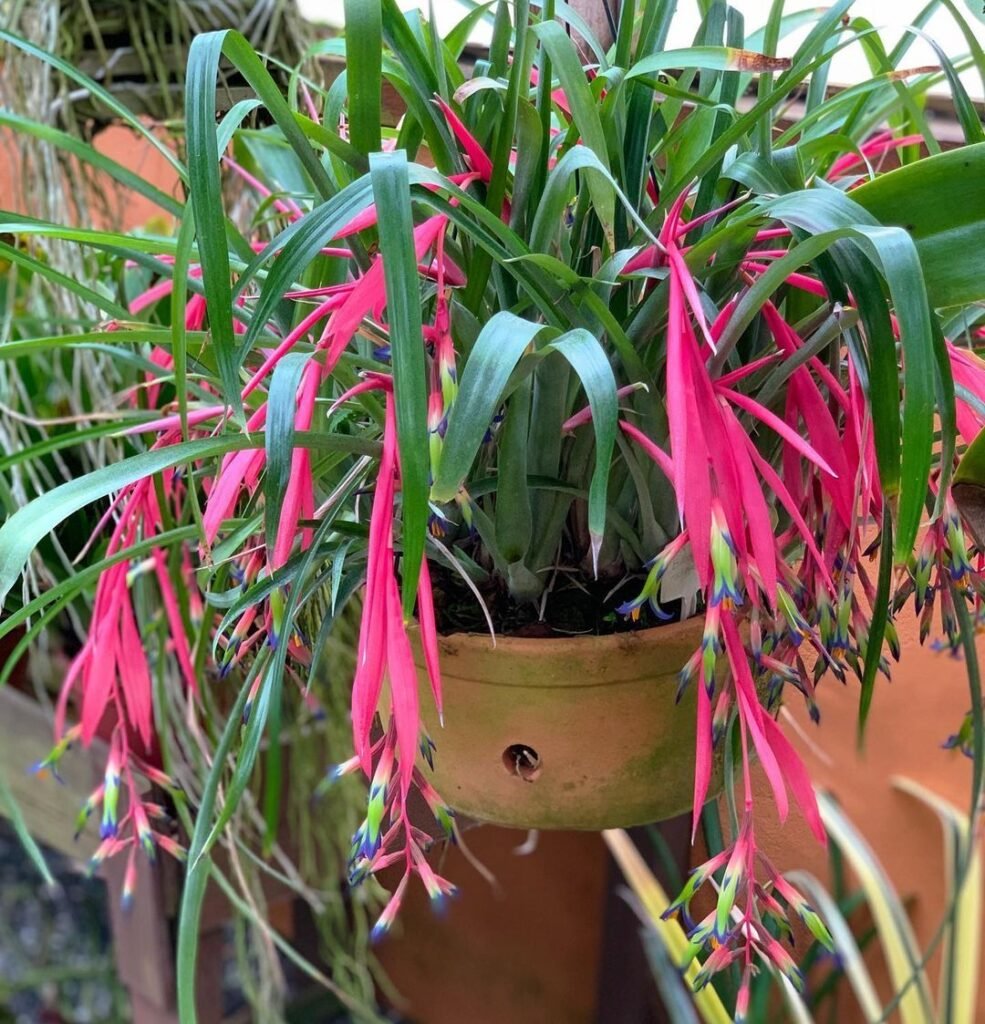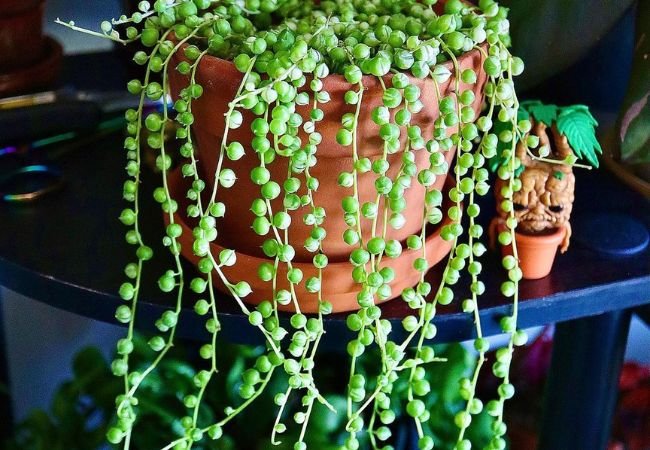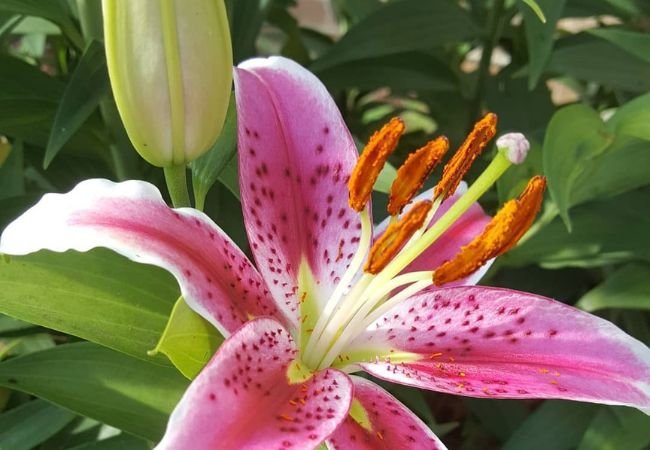Discover the unique beauty of Queen’s Tears Billbergia. Learn how to grow and care for this exotic bromeliad, from planting to blooming, in this comprehensive guide.
Queen’s Tears Billbergia (Billbergia nutans) is a fascinating bromeliad known for its unique, pendant-like flowers. This guide will help you understand and cultivate this exotic plant, whether you’re a seasoned gardener or a curious beginner.
What is Queen’s Tears Billbergia?

Queen’s Tears Billbergia is an epiphytic bromeliad native to South America. It’s known for its:
- Long, arching leaves
- Distinctive hanging flowers with pink bracts and blue-tipped petals
- Ability to grow in trees or soil
Growing Queen’s Tears Billbergia
Light Requirements
- Prefers bright, indirect light
- Can tolerate some direct morning sun
- Avoid harsh afternoon sunlight
Temperature and Humidity
- Ideal temperature range: 60-80°F (15-27°C)
- Tolerates brief periods of cold down to 20°F (-6°C)
- Enjoys high humidity but adapts to average home conditions
Soil and Potting
- Use a well-draining potting mix designed for bromeliads or orchids
- Can be grown mounted on wood or in pots
- Ensure good drainage to prevent root rot
Watering Queen’s Tears Billbergia
- Keep the central cup (formed by leaves) filled with water
- Allow the potting medium to dry slightly between waterings
- Use rainwater or distilled water if possible to avoid mineral buildup
Fertilizing
- Feed sparingly during the growing season
- Use a balanced, water-soluble fertilizer at 1/4 strength
- Apply fertilizer to the potting medium, not the central cup
Propagation
Queen’s Tears Billbergia is easy to propagate:
- Remove offsets (pups) when they’re about 1/3 the size of the parent plant
- Plant offsets in their own pots or mount them
- Keep the new plants warm and moist until established
Guide to propagating bromeliads
Blooming
- Typically blooms in late winter or early spring
- Flowers last for several weeks
- The parent plant will die after flowering, but offsets will continue growing
Common Problems and Solutions
- Brown leaf tips
- Cause: Low humidity or excess fertilizer
- Solution: Increase humidity or reduce fertilizing
- Lack of blooming
- Cause: Insufficient light or maturity
- Solution: Provide brighter light and be patient
- Rotting base
- Cause: Overwatering or poor drainage
- Solution: Improve drainage and reduce watering
Troubleshooting bromeliad problems
Displaying Queen’s Tears Billbergia
- Excellent in hanging baskets
- Can be mounted on driftwood or tree fern plaques
- Looks striking when grouped with other bromeliads
Queen’s Tears Billbergia in Landscaping
- Use as a groundcover in frost-free areas
- Plant in the branches of trees in tropical climates
- Incorporate into rock gardens or tropical-themed landscapes
Queen’s Tears Billbergia is a unique and relatively easy-to-grow bromeliad that can add exotic beauty to your home or garden. With its striking flowers and interesting growth habit, it’s sure to be a conversation starter. By following the care guidelines in this article, you’ll be well on your way to successfully growing and enjoying this fascinating plant.
Remember, like all bromeliads, Queen’s Tears has a relatively long lifespan but will eventually die after flowering. However, by nurturing its offsets, you can enjoy these beautiful plants for many years to come.
Explore more unusual houseplants
For more gardening tips and plant care guides, visit usagardenhub.com.







One comment on “Queen’s Tears Billbergia : A Guide to Growing This Exotic Bromeliad”